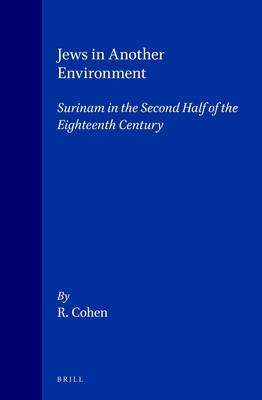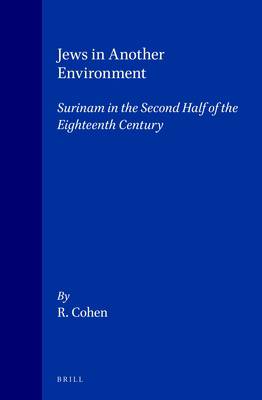
Je cadeautjes zeker op tijd in huis hebben voor de feestdagen? Kom langs in onze winkels en vind het perfecte geschenk!
- Afhalen na 1 uur in een winkel met voorraad
- Gratis thuislevering in België vanaf € 30
- Ruim aanbod met 7 miljoen producten
Je cadeautjes zeker op tijd in huis hebben voor de feestdagen? Kom langs in onze winkels en vind het perfecte geschenk!
- Afhalen na 1 uur in een winkel met voorraad
- Gratis thuislevering in België vanaf € 30
- Ruim aanbod met 7 miljoen producten
Zoeken
€ 418,45
+ 836 punten
Omschrijving
The most important Jewish center in the western hemisphere during the eighteenth century was "the great colony" - Surinam. There, Jews formed perhaps the most privileged Jewish community in the world. They were often plantation and slave owners, as well as a sizeable proportion of the white population. They had their own village, with extensive autonomous rights.
This book is a study of the impact of environment on Jewish life in a colonial society. It analyzes the impact of environment upon migratory patterns, health and mortality, economic structures, intellectual life, and communal dynamics.
Following the methods of social history, this book uses an interdisciplinary approach to examine the impact of environment upon the modification of traditional values and modes of behavior.
This is the first full-length monograph on Surinamese Jewry to appear in two hundred years. The first one, the Historical Essay of David Nassy, treated Jewish history as part of the colonial experience. This book treats the colonial experience as part of Jewish history.
This book is a study of the impact of environment on Jewish life in a colonial society. It analyzes the impact of environment upon migratory patterns, health and mortality, economic structures, intellectual life, and communal dynamics.
Following the methods of social history, this book uses an interdisciplinary approach to examine the impact of environment upon the modification of traditional values and modes of behavior.
This is the first full-length monograph on Surinamese Jewry to appear in two hundred years. The first one, the Historical Essay of David Nassy, treated Jewish history as part of the colonial experience. This book treats the colonial experience as part of Jewish history.
Specificaties
Betrokkenen
- Auteur(s):
- Uitgeverij:
Inhoud
- Aantal bladzijden:
- 368
- Taal:
- Engels
- Reeks:
- Reeksnummer:
- nr. 1
Eigenschappen
- Productcode (EAN):
- 9789004093737
- Verschijningsdatum:
- 1/05/1991
- Uitvoering:
- Hardcover
- Formaat:
- Genaaid
- Afmetingen:
- 164 mm x 243 mm
- Gewicht:
- 789 g

Alleen bij Standaard Boekhandel
+ 836 punten op je klantenkaart van Standaard Boekhandel
Beoordelingen
We publiceren alleen reviews die voldoen aan de voorwaarden voor reviews. Bekijk onze voorwaarden voor reviews.









